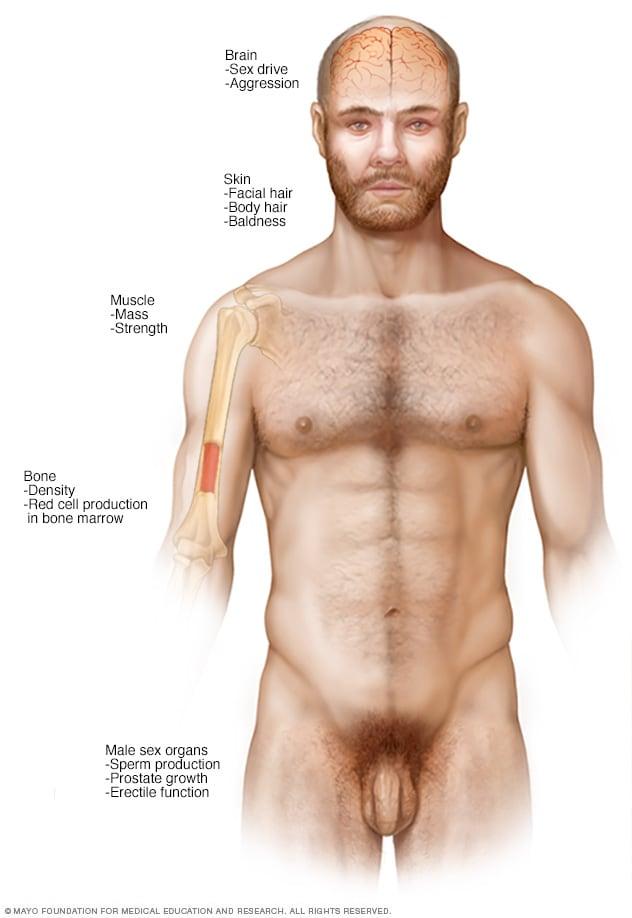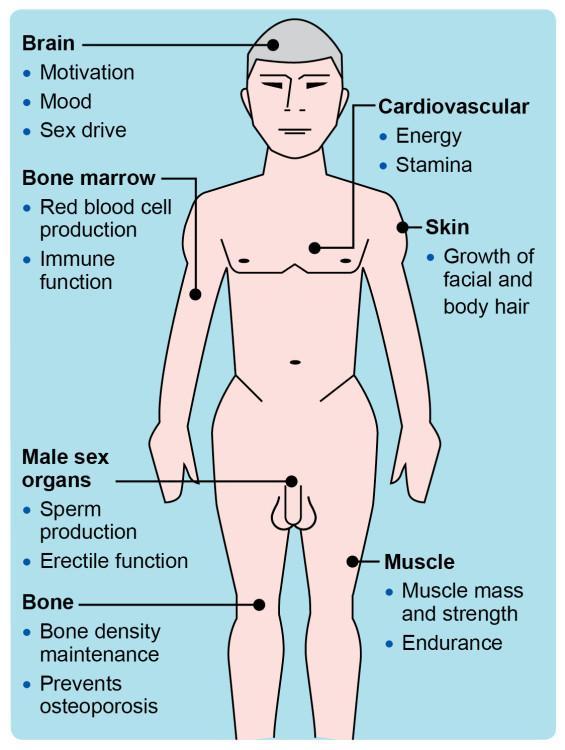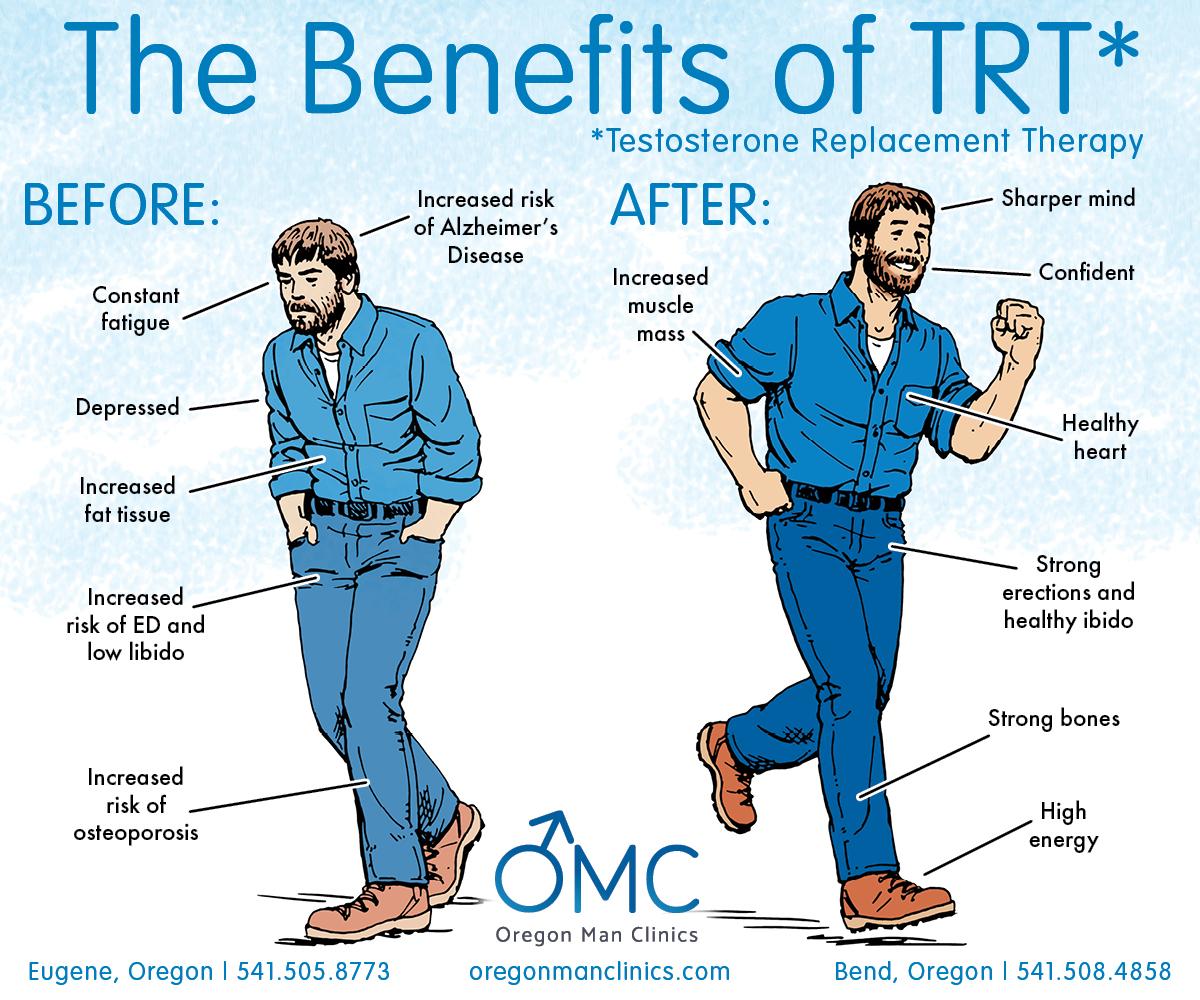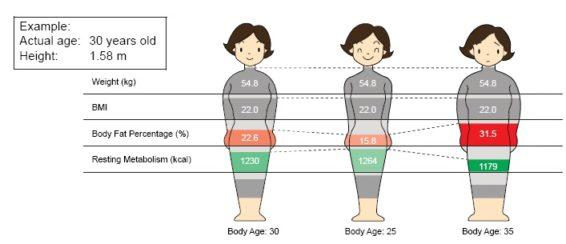Unlocking the Mysteries of Testosterone Therapy: A Pathway to Enhanced Body Composition
In today’s wellness landscape, the pursuit of an ideal body composition has become as prevalent as the quest for balanced nutrition and regular exercise. Amid this fervor, testosterone therapy has emerged as a focal point of discussion, intriguing both the fitness-savvy and the scientifically-minded alike. Often associated with masculinity and vitality, testosterone plays a crucial role in the intricate dance of muscle mass, fat distribution, and overall health. As we delve into the nuances of testosterone therapy, we will explore its potential impacts on body composition, the underlying science, and the implications for those considering this treatment. Join us on this journey to demystify how adjusting hormone levels may influence not just aesthetics, but also well-being, vitality, and the very essence of health in modern life.
Exploring the Role of Testosterone in Body Composition
Testosterone plays a pivotal role in shaping body composition, influencing the balance between muscle and fat. Elevated testosterone levels are often linked to increased muscle mass, enhanced strength, and reduced fat accumulation. This is particularly significant in both men and women, as it contributes not only to physical performance but also to overall well-being. Research suggests that individuals with optimal levels of testosterone tend to exhibit improved metabolic health. Consequently, understanding the relationship between testosterone levels and body composition can empower individuals to make informed decisions about their health and fitness journeys.
When considering testosterone therapy as a potential avenue for improving body composition, it’s essential to recognize its individual effects. Each person’s hormonal balance varies, and factors such as age, lifestyle, and diet all play critical roles. Below is a brief overview of how testosterone therapy can impact body composition:
| Impact of Testosterone Therapy | Effects |
|---|---|
| Increased Muscle Mass | Enhances lean muscle development |
| Fat Reduction | Decreases body fat percentage |
| Bone Density Improvement | Supports stronger bones |
| Enhanced Energy Levels | Improves overall vitality and stamina |
Embracing testosterone therapy can also prompt lifestyle changes that further augment these benefits. Regular exercise, particularly strength training, along with balanced nutrition, can significantly enhance the positive effects of therapy. By addressing lifestyle factors in conjunction with hormone optimization, individuals can achieve a more favorable body composition that aligns with their health objectives.

Understanding the Benefits of Testosterone Therapy for Muscle Mass
Testosterone therapy has gained recognition for its significant role in enhancing muscle mass and overall body composition, especially in individuals experiencing low testosterone levels. By augmenting testosterone levels, therapy can lead to an increase in protein synthesis, which is essential for muscle growth. As the body becomes more efficient at building muscle, patients often notice improvements not just in their physical strength but also in their metabolic health. This can translate into a more toned appearance and better functional capacity in daily activities.
The benefits of testosterone therapy extend beyond mere muscle gain. Here are some key advantages:
- Increased Energy Levels: Higher testosterone levels can combat fatigue, leading to more active lifestyles.
- Enhanced Recovery: Improved recovery times between workouts allow for more consistent training.
- Improved Mood: Testosterone therapy can positively influence mental well-being, reducing symptoms of depression and anxiety.
Individuals undergoing testosterone therapy often report not just physical changes, but also a revitalized sense of confidence and motivation. this therapy can serve as a powerful tool in achieving desired body composition goals.

The Connection Between Testosterone Levels and Fat Distribution
Testosterone plays a crucial role in how our bodies store fat, influencing not only body composition but also overall health. Low testosterone levels can lead to an increase in body fat, especially in the abdominal area. This shift in fat distribution is often linked to metabolic syndrome and other cardiovascular issues. Understanding how testosterone affects fat allocation may assist individuals in managing weight and enhancing body composition. Here are some key aspects to consider:
- Fat Loss and Muscle Mass: Testosterone promotes muscle growth, which can increase basal metabolic rate, aiding in fat loss.
- Abdominal Fat Accumulation: Decreased testosterone levels often correlate with visceral fat increase, which is a risk factor for various diseases.
- Hormonal Balance: A balance between testosterone and other hormones, like estrogen, is essential for optimal fat distribution.
Emerging research has demonstrated that testosterone therapy may help redistributing fat and improving body composition. The potential benefits of addressing low testosterone levels through therapy can lead not only to reduced body fat percentage but also to increased lean muscle tissue. Exploring this connection can provide valuable insights for anyone aiming to optimize their body composition effectively. The following table outlines the effects of testosterone levels on fat distribution:
| Testosterone Level | Fat Distribution Type | Health Implications |
|---|---|---|
| Low | Increased abdominal fat | Higher risk of metabolic disorders |
| Normal | Balanced fat distribution | Optimal health and reduced disease risk |
| High | Muscular definition, reduced body fat | Increased metabolic rate |

Identifying Candidates for Testosterone Therapy: Who Should Consider It?
When considering testosterone therapy, it’s essential to identify individuals who may significantly benefit from this treatment. Factors such as age, lifestyle, and symptoms play a crucial role in determining candidacy. Typically, candidates may exhibit signs of low testosterone levels, including:
- Fatigue or decreased energy levels
- Reduced muscle mass and strength
- Increased body fat
- Low libido or sexual dysfunction
- Mood changes, such as depression or irritability
Additionally, certain health conditions can predispose individuals to low testosterone and make them suitable candidates for therapy. These may include:
| Health Condition | Impact on Testosterone Levels |
|---|---|
| Obesity | Increased aromatization of testosterone to estrogen |
| Diabetes | Insulin resistance can lower testosterone production |
| Chronic illness | May affect hormonal balance and testosterone synthesis |
| Hormonal disorders | Direct impact on the pituitary gland and testosterone production |
By taking these variables into account, healthcare professionals can more accurately assess who might find testosterone therapy beneficial, ultimately improving body composition and overall well-being.
Choosing the Right Method of Testosterone Therapy: Options and Considerations
When considering testosterone therapy, it’s essential to evaluate various methods available, each with its own unique benefits and potential drawbacks. Common options include:
- Injections: Typically administered every few weeks, these can provide quick increases in testosterone levels but may require regular visits to a healthcare provider.
- Patches: These deliver a steady dose of testosterone through the skin, allowing for consistent hormone levels without the need for injections.
- Gels: Applied directly to the skin, gels offer flexibility and ease of use; however, proper application is crucial to prevent unintended transfer to others.
- Pellets: Implanted under the skin, these provide long-lasting hormone release but may involve a minor surgical procedure for placement.
Before deciding on a method, individuals should consider factors such as lifestyle preferences, the frequency of administration, and medical history. It’s also advisable to discuss potential side effects, which can include:
- Skin reactions: May occur with patches and gels.
- Increased red blood cell count: A potential risk associated with injections.
- Hormonal fluctuations: Can lead to mood changes or other side effects.
| Method | Frequency | Pros | Cons |
|---|---|---|---|
| Injections | Every 1-3 weeks | Quick results | Requires regular visits |
| Patches | Daily | Steady release | Skin irritation possible |
| Gels | Daily | Flexible use | Risk of transferring to others |
| Pellets | Every 3-6 months | Long-lasting | Minor surgical procedure |
Monitoring Progress: Evaluating the Effects of Testosterone on Body Composition
Evaluating the effects of testosterone therapy on body composition requires a multi-faceted approach that encompasses both quantitative and qualitative assessments. It is crucial to monitor key metrics over time, including:
- Body fat percentage: Regular measurements can reveal changes in fat distribution.
- Muscle mass: Tracking increases in lean muscle points to the effectiveness of therapy.
- Strength levels: Observing performance in resistance training can indicate improvements in body composition.
Furthermore, it is beneficial to utilize standardized assessment tools that can offer objective insights. Consider implementing periodic blood tests to measure:
- Testosterone levels: Ensures the therapy is correctly aligned with treatment goals.
- Metabolic markers: Can provide information on how body composition changes affect overall health.
- Insulin sensitivity: Assessing this can indicate the impact of testosterone on fat storage and muscle gain.
| Assessment Tool | Purpose |
|---|---|
| DEXA Scan | Measures bone density and body composition accurately. |
| Bioelectrical Impedance Analysis | Estimates body composition through electrical signals. |
| Caliper Measurements | Assesses body fat percentage using skinfold thickness. |
Addressing Potential Risks and Side Effects of Testosterone Therapy
While testosterone therapy can significantly enhance body composition, it is essential to be aware of the potential risks and side effects associated with its use. Individuals considering this treatment should consult with healthcare professionals to ensure a comprehensive evaluation of their health status. Some notable risks include:
- Cardiovascular Issues: There is ongoing debate regarding the impact of testosterone on heart health, with some studies linking augmented testosterone levels to an increased risk of heart disease and stroke.
- Hormonal Imbalance: Over-treatment can lead to elevated estrogen levels, causing issues such as gynecomastia (enlargement of breast tissue in men).
- Sleep Apnea: Testosterone therapy may exacerbate existing sleep apnea or lead to its development.
- Fertility Concerns: High levels of testosterone can suppress sperm production and affect fertility.
Monitoring and managing these risks is crucial for anyone undergoing testosterone therapy. Regular check-ups and blood tests can help mitigate the consequences of treatment. Below is a summary of common side effects that should be discussed with your healthcare provider:
| Side Effect | Description |
|---|---|
| Acne | Increased oiliness of the skin can lead to breakouts. |
| Hair Loss | Some may experience accelerated male-pattern baldness. |
| Mood Swings | Testosterone fluctuations can impact mood and emotional well-being. |
| Liver Toxicity | Oral testosterone formulations may strain liver function. |
Q&A
Q&A: Testosterone Therapy for Body Composition
Q1: What is testosterone therapy and how does it relate to body composition?
A1: Testosterone therapy involves the administration of testosterone to individuals with low levels of this hormone due to age, medical conditions, or other factors. It can influence body composition by promoting muscle growth, reducing fat mass, and enhancing overall physical performance. This therapy aims to restore hormonal balance, which can be crucial for those experiencing symptoms of low testosterone.
Q2: Who might benefit from testosterone therapy for body composition?
A2: Individuals who may benefit from testosterone therapy include men over 40, those with diagnosed hypogonadism (low testosterone), and, in some cases, women who experience hormonal imbalances. For these individuals, testosterone therapy could lead to improvements in muscle mass, strength, and overall body composition, especially when combined with exercise and proper nutrition.
Q3: What are the potential benefits of testosterone therapy on body composition?
A3: The potential benefits include increased lean muscle mass, reduction in body fat percentage, improved bone density, and enhanced energy levels. Additionally, many people experience improved mood and cognitive function, making it a holistic approach to wellness beyond just physical appearance.
Q4: Are there any risks associated with testosterone therapy?
A4: Yes, testosterone therapy can carry risks, such as cardiovascular issues, an increased risk of prostate problems, and potential mood swings. It’s essential to discuss these risks with a healthcare provider to determine if the benefits outweigh them and to ensure that therapy is monitored appropriately.
Q5: How is testosterone therapy administered?
A5: Testosterone can be administered in several forms, including injections, transdermal patches, topical gels, or pellets implanted under the skin. The method chosen often depends on patient preference, lifestyle, and specific medical advice from a healthcare professional.
Q6: Can testosterone therapy replace a healthy lifestyle?
A6: Testosterone therapy is not a substitute for a healthy lifestyle. It can support body composition goals, but for optimal results, it should be combined with regular exercise, a balanced diet, and good sleep hygiene. A holistic approach is essential for achieving and maintaining desired outcomes.
Q7: How long does it take to see results from testosterone therapy?
A7: Users typically begin to notice improvements in body composition and energy levels within a few weeks, although significant changes in muscle mass and fat loss may take several months of consistent therapy, combined with a supportive lifestyle.
Q8: Who should avoid testosterone therapy?
A8: Individuals who have certain medical conditions, such as prostate or breast cancer, severe heart disease, or untreated sleep apnea, may be advised against testosterone therapy. A thorough medical evaluation is necessary to determine suitability for treatment.
Q9: What should someone do if they are considering testosterone therapy?
A9: If you’re considering testosterone therapy, the first step is to consult with a healthcare provider experienced in hormone management. They will perform necessary tests, discuss symptoms, assess potential risks, and outline a personalized treatment plan that fits your individual needs and goals.
Q10: Is testosterone therapy a long-term commitment?
A10: Yes, testosterone therapy is often a long-term commitment. Once initiated, patients typically need ongoing monitoring and adjustments to dosages based on ongoing blood tests and clinical evaluations. The duration of treatment can vary widely depending on individual circumstances and responses to therapy.
In Summary
As we conclude our exploration of testosterone therapy and its implications for body composition, it becomes clear that this complex topic warrants careful consideration. While the potential benefits of hormonal optimization can be enticing, it’s essential to approach this avenue with a balanced perspective. As with any medical intervention, the journey to wellness is uniquely personal and should be navigated with guidance from healthcare professionals.
In an era where body composition ideals often dominate our discussions about health, testosterone therapy presents both opportunities and challenges for those seeking to reframe their physicality. Whether one is motivated by fitness goals, age-related changes, or simply a desire for improved vitality, knowledge is the key to informed decision-making.
As we look to the future of health and wellness, let us continue to foster open dialogue around the multifaceted role of hormones in our lives, embracing the science while respecting the individuality of each person’s path. After all, understanding our bodies is not merely about achieving a desired shape but about cultivating a foundation for lasting health and well-being.










